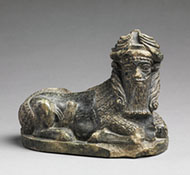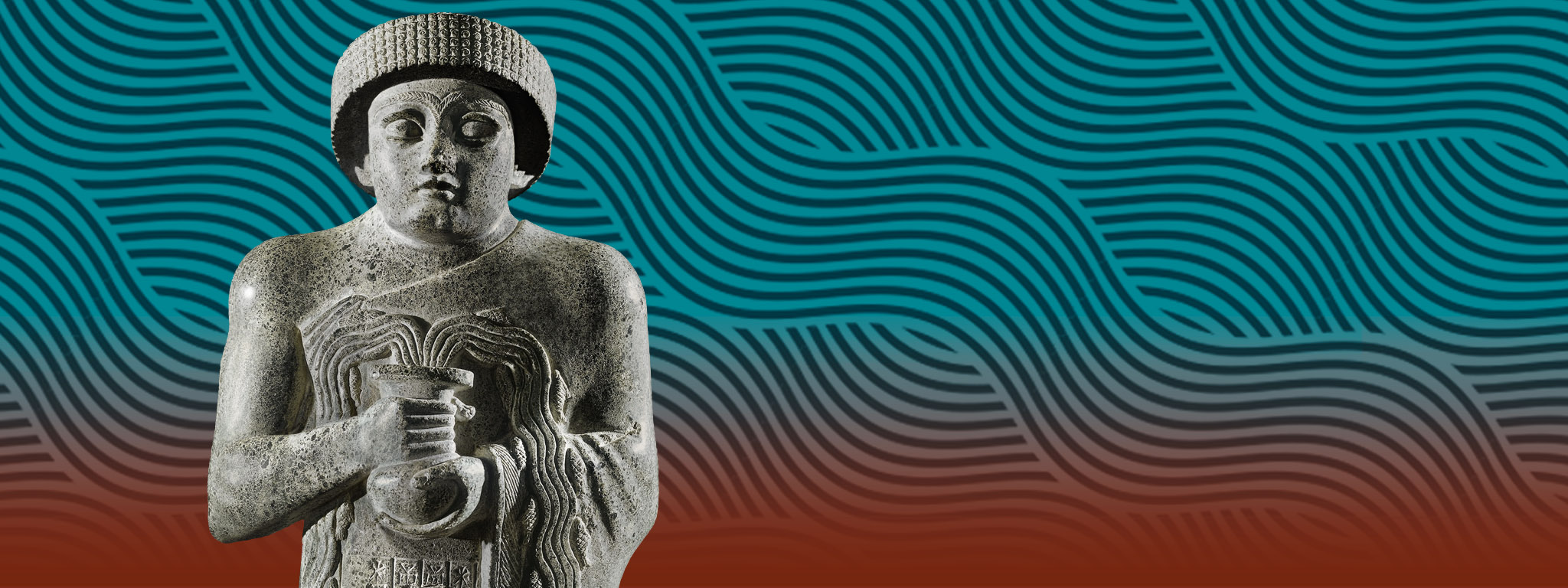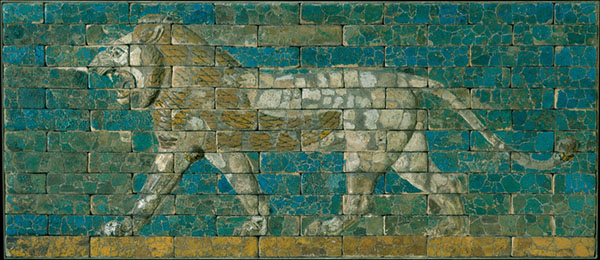Essas antiguidades, roubadas, compradas, expropriadas, doadas, estão espalhadas em diversos museus no mundo, especialmente na Europa (a imperialista), nos EUA (os donos do dinheiro) e na própria região, que ainda não visitamos, eu ou Carmen Lícia. Mas já visitamos praticamente todos os museus europeus e americanos que possuem essas coleções fantásticas, e especialmente a Villa Getty, que agora organiza esta fabulosa exposição junto com o Museu do Louvre.
Paulo Roberto de Almeida
Wall Panel with a Striding Lion, 605–562 BC, Neo-Babylonian. Glazed ceramic. The Metropolitan Museum of Art, Fletcher Fund, 1931 (31.13.1). Image: www.metmuseum.org

EXHIBITIONS
| Statuette of a Human-Headed Bull, about 2150–2000 BC, Neo-Sumerian. Chlorite. Musée du Louvre, Département des Antiquités orientales. Image © RMN-Grand Palais / Art Resource, NY. Photo: Hervé Lewandowski |
Mesopotamia: Civilization Begins
March 18–July 27, 2020 | The Getty Villa
Mesopotamia—the land "between the rivers" in modern-day Iraq—was home to the ancient Sumerians, Babylonians, and Assyrians. Among their many achievements are the creation of the earliest known script (cuneiform), the formation of the first cities, the development of advanced astronomical and mathematical knowledge, and spectacular artistic and literary accomplishments. This exhibition covers three millennia, from the emergence of the first cities in about 3200 BC to Alexander the Great's conquest of Babylon in 331 BC.
Exhibition organized by the Musée du Louvre, Paris, and the J. Paul Getty Museum, Los Angeles.
Exhibition organized by the Musée du Louvre, Paris, and the J. Paul Getty Museum, Los Angeles.

Mesopotamia: Civilization Begins
Mesopotamia—the land "between the rivers" in modern-day Iraq—was home to the ancient Sumerians, Babylonians, and Assyrians. Among their many achievements are the creation of the earliest known script (cuneiform), the formation of the first cities, the development of advanced astronomical and mathematical knowledge, and spectacular artistic and literary accomplishments. The exhibition covers three millennia from the first cities in about 3200 BC to Alexander the Great’s conquest of Babylon in 331 BC.
Exhibition organized by the Musée du Louvre, Paris, and the J. Paul Getty Museum, Los Angeles.
FEATURED EXHIBITION
Mesopotamia
Civilization Begins
March 18–July 27, 2020, GETTY VILLA


Nenhum comentário:
Postar um comentário
Comentários são sempre bem-vindos, desde que se refiram ao objeto mesmo da postagem, de preferência identificados. Propagandas ou mensagens agressivas serão sumariamente eliminadas. Outras questões podem ser encaminhadas através de meu site (www.pralmeida.org). Formule seus comentários em linguagem concisa, objetiva, em um Português aceitável para os padrões da língua coloquial.
A confirmação manual dos comentários é necessária, tendo em vista o grande número de junks e spams recebidos.